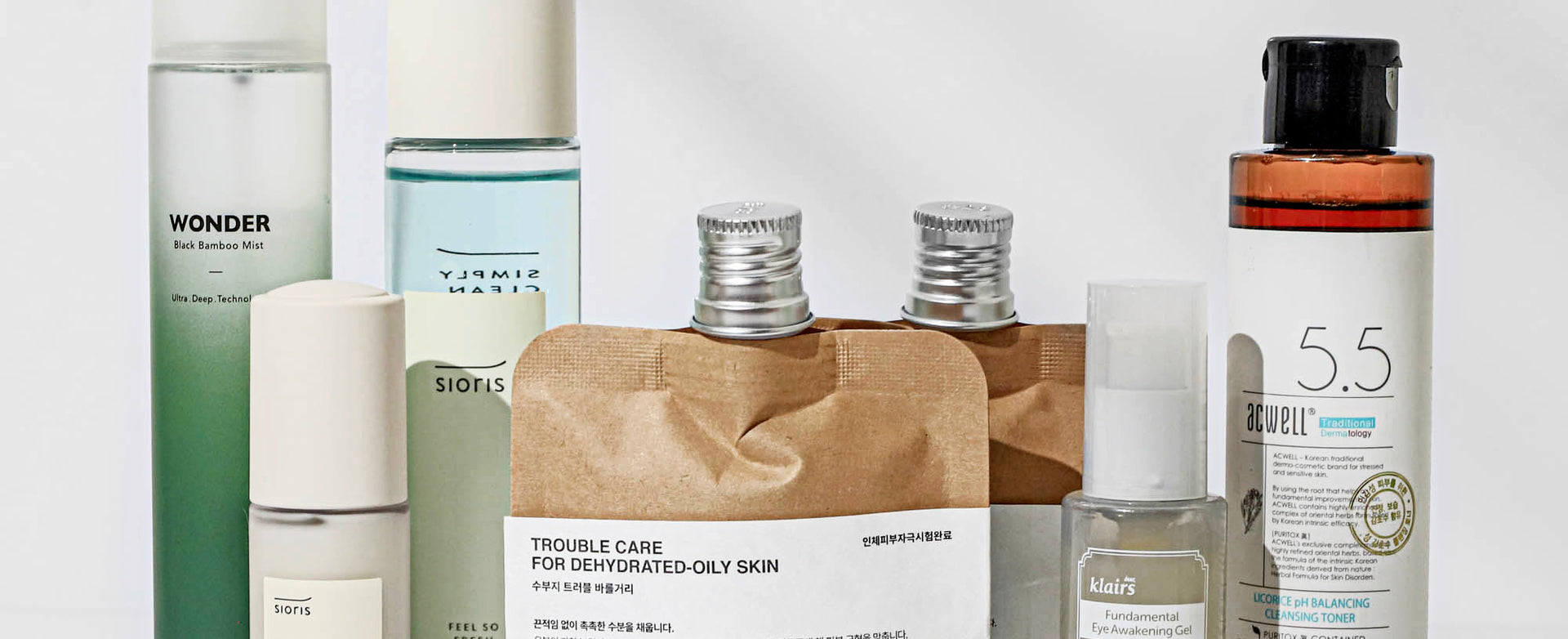CLEAN BEAUTY
It often feels like the more we know, the more we need to worry about. BPA in food packaging, parabens in shampoo, irritants in cleaning products… It’s no wonder more and more people are looking for clean products, especially if you’re going to put it on your face.
But how do we know for sure if something contains a harmful compound? Are we being anxious for no reason? Is the Clean Beauty Movement here to save the world?
But first, What IS Clean Beauty?
“Clean” beauty is a philosophy that could be summarized as “non-toxic”, both for you, and for the planet. But what this means practically is a little harder to pinpoint. For one, different countries may have higher/lower thresholds for what they consider toxic. In the EU, over 1,000 chemicals have been banned in personal care products, while the US has only banned a handful.
The term “clean” is an unregulated term, so it doesn’t necessarily mean what you think it does, but what the brand wants to portray. It’s also relative, as people have different ideas as to what they want or don’t want in their skincare.
If you don’t want to rely solely on what a label says, you’ll need to know some basics about clean beauty. Here are some things to keep in mind!
Clean Beauty Products Have…
- Clean, non-toxic ingredients
This includes anything that is known or suspected to disrupt hormones, carcinogens, anything that could cause birth defects, reproductive issues, respiratory issues, major irritants… In short, anything that could cause disease or really harm your body. Scientists and dermatologists are still debating certain ingredients, but brands focused on clean products will typically list what they don’t include on their packaging if they feel it’s relevant. Most commonly, Clean Beauty products are formulated without the so-called “5 Negatives”: Artificial fragrance, Mineral oils, Parabens, Sulfates and Artificial coloring
- Clear labelling
Every ingredient in the product should be clearly listed on the package. Botanical ingredients will often be listed using their scientific name, but may have a common name in brackets. Watch out for anything that could be a “grouped” ingredient, like “fragrance”. Brands don’t have to disclose what is used in their “fragrance”, but a clean product should be clear about everything it contains.
- Certification marks, but not always
This one isn’t as common or as regulated as an organic certification mark, so a product doesn’t have to be certified to be clean. Certification boards also don’t always agree on what chemicals are harmful. In many countries there is a mishmash of organizations that will certify clean products, but it’s up to you to decide whether you trust them or not.
- Some sort of concern for the environment
This one is tricky. Unless we know and understand how a company gathers their ingredients, and how they manufacture them, we can’t know for sure how they impact the environment. You’ll have to make your own informed decisions about what’s important to you. You may want a formula that biodegrades into harmless components after it gets washed down the drain. You may want to support a brand that harvests their ingredients sustainably. Recyclable packaging may be important to you. Checking a brand’s website and reviews should give you a glimpse into what the brand values, and if they’re making efforts to be environmentally responsible.
Clean Beauty Doesn’t Equal “Natural” or “Organic”
There’s a distinction between a natural (plant-based) or organic product, and a clean one. You may be surprised to find that your clean products may still contain synthetic compounds. As long as it isn’t toxic, synthetic ingredients are allowed. They may also contain animal products like honey, and they don’t have to be organic.
Clean beauty also isn’t guaranteed to be non-irritating to your skin. Remember that hormones and genetics play a big part in how skin reacts, so it’s better to know what specifically triggers your skin.
Beware of “Greenwashing”
Packaging and marketing can be misleading. Clear bottles, soothing colours, neutral boxes, and images of plants are all designed to convey the idea of purity and environmental friendliness. Even the signage in stores is carefully thought out in terms of what a brand wants to portray. You pick a product being convinced it has a plant-base, clean formula. However, once you take a closer look at the ingredient list, it turns out that this “natural” product contains allergens or irritants or hormone disruptors or what not – congratulations, you are being “greenwashed”.
Remember that promotional labelling doesn’t necessarily tell you everything. The omission of certain ingredients doesn’t mean the product doesn’t contain anything harmful, just that it doesn’t contain the ones they’ve specifically named.
It’s always best to go with trusted retailers and brands. There are many brands, like Sioris, Toun28, dear, Klairs, The Plant Base, Benton and others that have well-earned reputations for being transparent about their ingredients and manufacturing processes. You can also reach out to brands and retailers if you have questions about ingredients and sustainability.
Just as many people are concerned about what products they’re using in their homes, it’s good to be informed about what you’re putting on your skin. By finding out about brands and their policies, you not only protect yourself, but also ask that brands be accountable to consumers.
Want to be skincare-sustainable, but don’t know where to start? Check out NIASHA’s Clean Beauty collection, where we assembled “5 Negatives- free” products across KBeauty.




















































